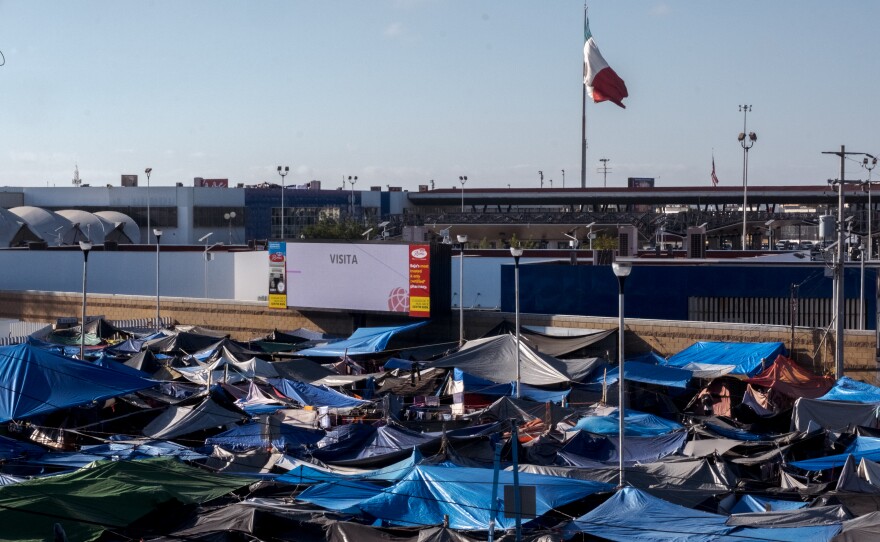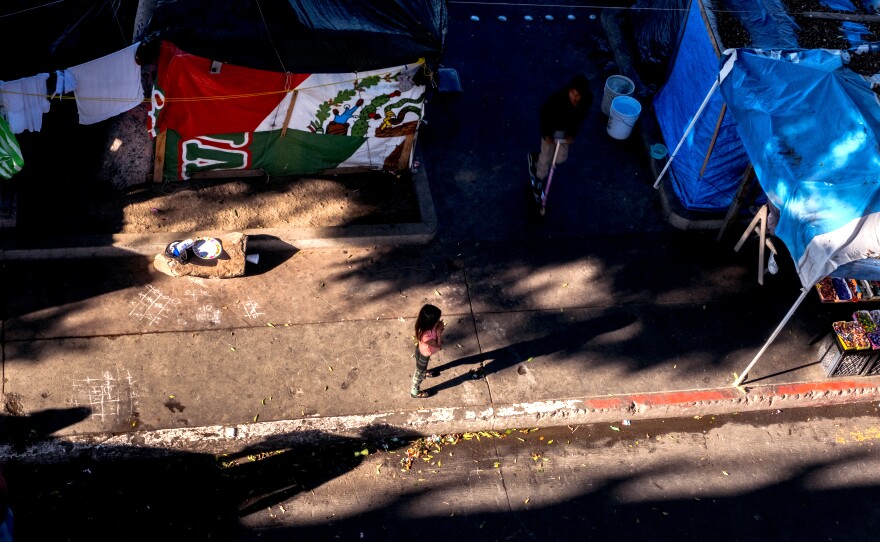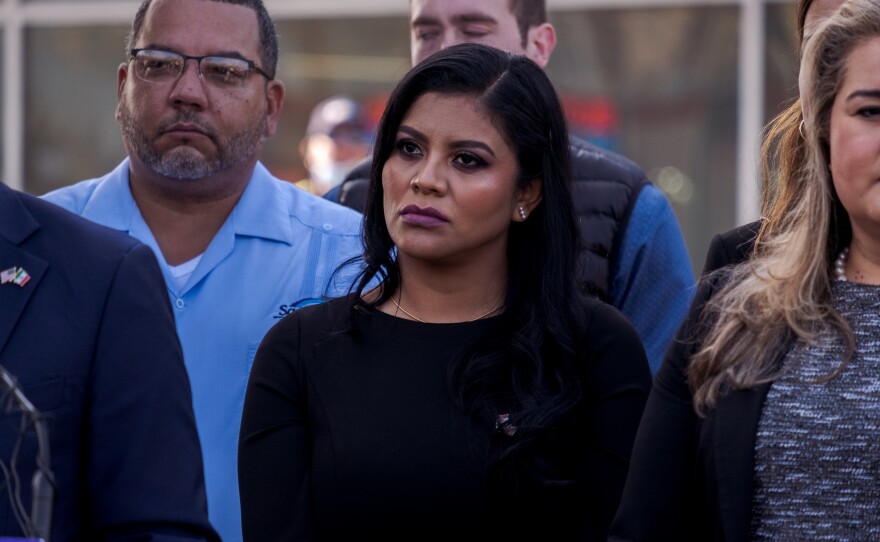The announcement Thursday that the Biden administration would restart the controversial Trump-era Remain in Mexico program was far from welcome news to Tijuana Mayor Montserrat Caballero.
She said the re-implementation of the program, which forces asylum seekers to live in Mexico while their immigration cases are adjudicated in the United States, will further exacerbate the already acute migrant crisis in Tijuana.
“We are not prepared,” Caballero told KPBS in a recent interview. “I don’t think any city or state is prepared. But we have to be respectful of the United States’ and Mexico’s decision.”
The Trump administration implemented Remain in Mexico in January 2019. During the 2020 campaign, President Joe Biden criticized the program as inhumane and he suspended it shortly after taking office.
However, lawsuits from Republican officials in Missouri and Texas resulted in a court-ordered return of the program. A federal judge ordered the Biden administration to make a good faith effort to resurrect it.
Before it was suspended, the program forced roughly 70,000 people back to Mexico. Hundreds of the migrants sent back ended up being robbed, assaulted and/or kidnapped, according to humanitarian groups documenting the violence. Several were also raped and killed, the groups reported.
Human Rights First’s February 2021 report,Delivered to Danger, documents more than 1,500 cases of violence against migrants returned to Mexico.
“U.S. government officials know that these regions of the border are extremely dangerous,” the report states.
In court filings, the Department of Homeland Security (DHS) acknowledged that Remain in Mexico was dangerous for migrants.
“The Department implemented MPP with the stated expectation that vulnerable populations would get the protection they needed while they waited in Mexico during the pendency of their removal proceedings," DHS said in one filing.
"In practice, however, there were pervasive and widespread reports of MPP enrollees being exposed to extreme violence and insecurity at the hands of transnational criminal organizations that prey on vulnerable migrants as they waited in Mexico for their immigration court hearings in the United States.”
In October, a group of advocates walked out of a meeting with White House officials who had asked their input on ways to make the program more humane.
“It is not possible to make the inhumane, humane, unfair, fair, or to breathe life into a deadly program,”the advocates said in a statement after their walkout.
The Biden-version of Remain in Mexico, which comes after negotiations with the Mexican government, will differ from Trump’s in a few key ways,according to DHS:
- Asylum cases for people enrolled in the program will be concluded within six months.
- Migrants in the program will have more access to lawyers.
- Individuals from particularly vulnerable groups will be excluded from the program.
- Everyone enrolled in the program will be offered COVID-19 vaccines.
DHS says these changes are aimed to “address humanitarian concerns raised by the Government of Mexico and shared by the U.S. Government.”
However, immigrant rights lawyers and advocates are unconvinced that this program can be implemented in a humane fashion, especially in light of the human suffering wrought by the Trump program
UNHCR, the UN Refugee Agency, criticized the return of Remain in Mexico because of, “its impact on asylum-seekers’ safety and their due process rights.
“The announced adjustments to the policy are not sufficient to address these fundamental concerns,” said UNHCR in a statement Thursday.

Tijuana Implications
In Tijuana, the return of Remain in Mexico poses significant challenges to a city that is already struggling with another migrant situation.
In March, hundreds of migrants created a makeshift refugee camp at El Chaparral, a pedestrian plaza and drop-off spot on the Mexican side of the San Ysidro pedestrian border crossing. At its peak, more than 1,700 people lived there.
That camp prompted the closure of the Ped West border crossing, which means all cross-border foot traffic must come through the Ped East crossing
El Chaparral is mostly populated by migrants who have been turned back from the U.S. through aTrump-era public health order called Title 42 that the Biden Administration has kept in place. Title 42 allows border officials to block asylum seekers from entering the country to stop the spread of COVID-19.
Caballero, who began her term in October, says local, state and federal governments initially failed to act.
“We decided to take the lead,” she said. “We asked other governments for help. They said we should sit down and talk. But I thought they’d already had too many meetings and nothing had been done.”
Caballero decided to surround the migrant camp in a fence after hearing false rumors that a child had been kidnapped. Then, she organized a census of the camp to get an accurate headcount.
The fence prevents more migrants from living in the camp and the headcount helps police control who goes in and out of the fenced-in area.
Instead of forcing migrants out, Caballero said her administration’s strategy is to persuade migrants to move into shelters, go back home, or stay in Tijuana. Shelters currently have enough beds for the people in the camp, she added.
Those shelters include a mix of private, city, state and federally operated facilities.
Once people leave El Chaparral, Caballero says she plans to ask the National Guard to patrol the area to prevent future migrant camps from opening.







